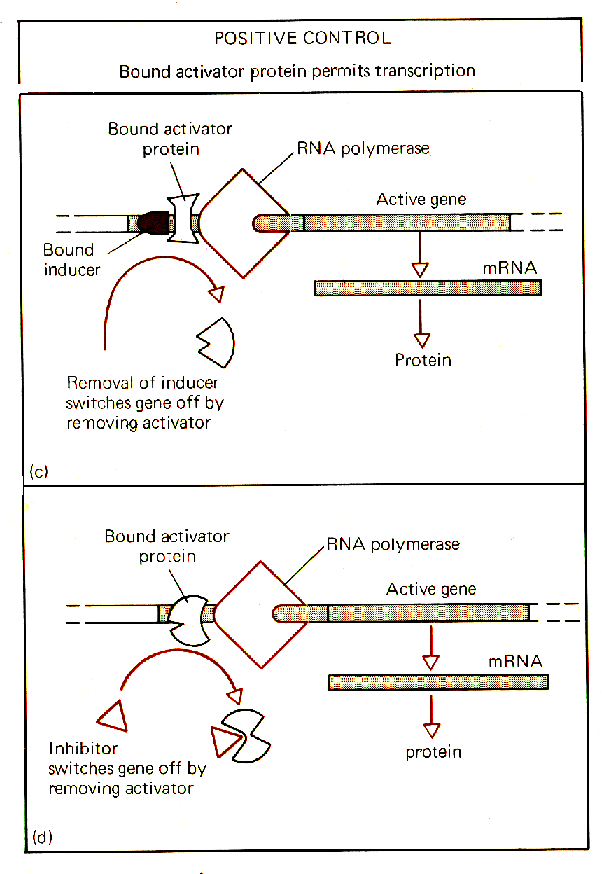Ch. 16
Positive Feedback Mechanism & The
Lac Operon
This version explains the Lac Operon
in greater detail than is required for the IB test!
In addition to lactose molecules acting as an inducer, another molecule called
CAP can act on the operon by working as an activator protein. CAP is able to
work because it turns out that RNA polymerase usually doen't fit onto the promoter
very well. It turns out that it does a better job of fitting onto the promoter
when CAP adheres to it first. However, CAP can't bind unless a small molecule
named cAMP joins with it.
cAMP is made as a result of the breakdown of the energy molecule ATP. When
the bacteria uses a lot of energy, it converts ATP to cAMP. If too much ATP
is broken down, then the bacteria will need more energy. This occurs when lactose
is first broken down into glucose, which can be further broken down to produce
ATP, energy the bacteria can use. If lots of cAMP is present, this is a signal
more lactose needs to be broken down. The cAMP binds to the CAP, and together
they help the RNA polymerase bind to the operon. Soon the RNA polymerase transcribes
the gene and eventually the enzyme to begin breakdown of lactose is produced.
When there is no need for cellular energy, the amount of ATP available to
the cell rises. This means that the amount of cAMP decreases, so the CAP then
ceases to bind to the operon, and thus the RNA polymerse can't in turn bind
as well either. Transcription of the gene decreases and the enzyme is not produced.
In the diagram below, the bound inducer represents cAMP. The bound activator
protein represents CAP. Together, they

Long & Slichter

